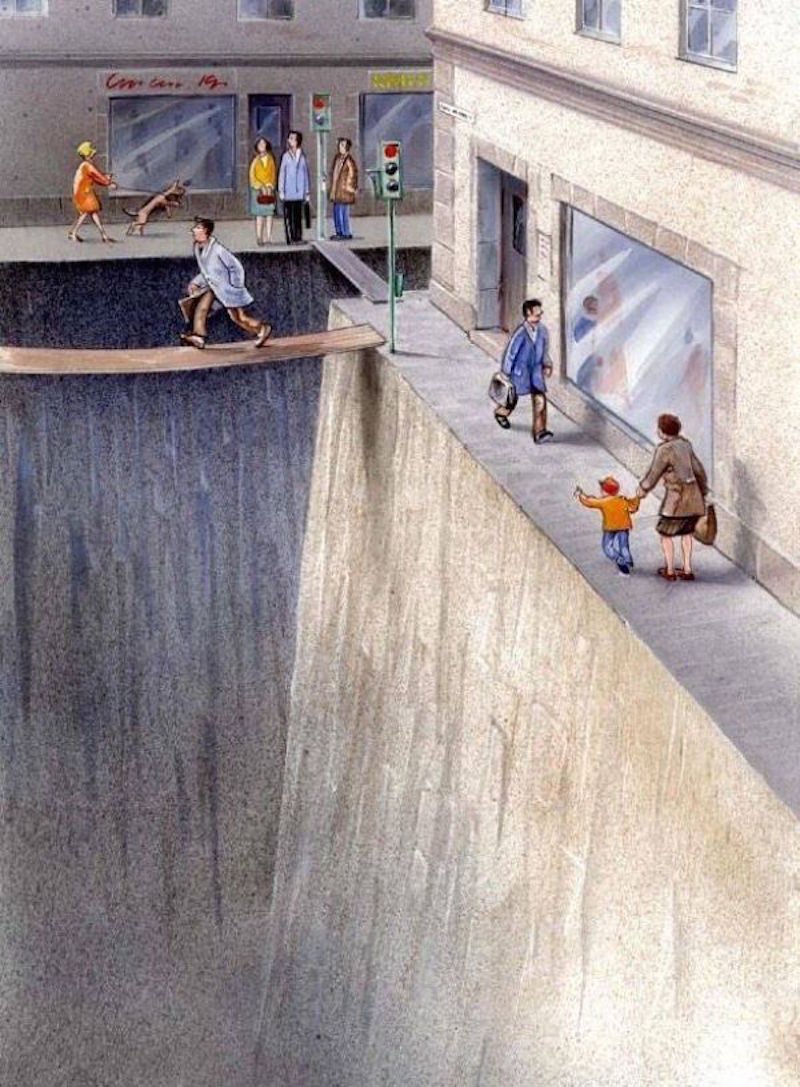This Illustration Nails the Pedestrian Problem in Cities

By:
People who walk, bike, use public transportation, or otherwise avoid traveling by car have a hard time in cities, which seem like they were designed solely for the convenience of automobiles.
Roadways for drivers dominate city design, and sidewalks and other pedestrian accommodations haven't kept up with the increasing density of cities and the growing number of people who get around on foot.
Swedish artist Karl Jilg has created an illustration that nails the struggle.
Jilg's image was commissioned by the Swedish Road Administration in 2014 to capture the pedestrian's plight.
 Karl Jilg
Karl Jilg
Jilg's work highlights how cities need to do a better job of protecting pedestrians.
An average of 430 people a day are treated in an emergency room for a pedestrian-related traffic accident, the Centers for Disease Control and Prevention reported.
Denver lacks 520 miles of sidewalks. That means no sidewalks along more than a quarter of the city's streets.
Missing sidewalks are hazardous to pedestrians: There is roughly one car-crash-related pedestrian death every two hours, the CDC estimated.
Cities can protect pedestrians through better design:
- Put buildings along sidewalks and move parking lots behind them or underground.
- Create public spaces to cater first to pedestrians, not cars. Add small parks, encourage street festivals, install signs with walking directions, dedicate streets solely for hybrid cars and pedestrians.
Such policies can have huge economic benefits, as they have for New York and Sydney.
Some cities are moving away from cars — and that's great news.
Putting pedestrians first is catching on.
Some cities routinely close off streets to cars on certain days. This worldwide practice encourages walking and biking while improving safety and air quality, letting people get exercise, boosting shopping, and reducing crime.
Other cities have dedicated entire districts to pedestrians only. Madrid, Dublin, Paris, and more are pushing cars out and ticket drivers to prevent them from accessing these districts.
Oslo, Norway, is going even further: It has set a goal of eliminating cars from its entire downtown area by 2019, "the first comprehensive and permanent four-wheel prohibition in any major European city," Citylab reported.
Cities don't have to be like Jilg's illustration.
New York, Los Angeles, Brussels, and Bogotá are making pedestrians a priority as car ownership may begin to fall in the U.S.
Why is this important? Cities that put pedestrians first are safer for everyone.
(H/T Business Insider)
